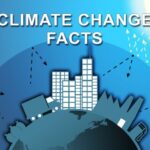Korea has had a nationwide voluntary program for three years to encourage its citizens to reduce their carbon footprints. The Carbon Neutral Point System (CNPS) is aimed at reducing greenhouse gasses (GHGs) by 5% nationwide through energy use savings. CNPS uses serialized meters to track electricity, water and gas consumption. Individual homes, schools, commercial buildings and apartments can all participate. Points are awarded by comparing standard usage estimated with actual consumption.
A 5% to 10% reduction in electricity usage earns 5,000 points, water 750 points, and gas 3,000 points.
Reduce usage by 10 to 15% and earn 10,000 points for electricity, 1,500 for water and 6,000 for gas.
For those achieving reductions above 15%, the points earned are 15,000, 2,000 and 8,000 respectively.
Twice yearly, households, businesses and individual participants receive cash or a gift card. Apartments receive payments once a year.
The initiative is part of a large national plan, called the Basic Plan, to achieve carbon neutrality. It is an attempt to achieve the Nationally Determined Contribution numbers pledged by the country in its announcements at recent COP meetings and is part of an awareness strategy to get citizens involved in reaching net zero by 2050.
How successful has the CNPS been?
On Christmas Eve, the Korean Ministry of Environment announced that 1.8 million were participating in the voluntary program. When launched in 2022, the initial number of subscribers was 270,000 and the point payments of 2.45 billion Korean Wan (KRW) equalled approximately US 1.69 million dollars. This year the payouts reached 14.8 billion KRW or more than $10 million.
One of the reasons for the sharp increase in voluntary enrollment was the introduction of a mobile app called Carbon Pay and the addition of more incentive categories to earn points.
Kim Jung-Hwan is the Director General of the Ministry of Environment’s Climate Change Policy Bureau. He recently described the CNPS as a way for “more people to actively take small steps to respond to the climate crisis” while being rewarded for their efforts.
Have other countries implemented programs similar to the CNPS?
The closest analog is Canada’s Carbon Pricing and Rebate system which involves an escalating carbon levy on consumers at the gas pump while paying rebates up to four times a year often greater than the money collected from the levy.
Nowhere else do citizens receive cash for managing their carbon footprints. A few countries provide incentives for installing solar panels and making homes more energy efficient. These include Germany, the United States, Australia, the state of Gujarat in India, and the United Kingdom.
Carbon pricing initiatives in countries like Norway and Sweden are designed to encourage citizens to reduce their carbon footprints but grants and other payment incentives focus on industry and businesses rather than households.
After doing a global review of national incentive programs focused on carbon footprint reductions it is clear that Korea has taken a unique approach to tackling climate change. It focuses on the individual rather than industry and business. It is not regulatory like the U.S. Inflation Reduction Act, or the EU Climate Law, of which both are top-down in approach when tackling climate change. What Korea has designed rewards grassroots participants with cash and gift cards. It appeals to individual participation and responsibility. It gives citizens a stake in achieving net zero. Maybe more countries should consider doing the same.










Love this idea, but are there many participants who receive nothing? Because if everyone is getting something, that math works out to roughly $5/year. That doesn’t seem likely to be sufficient incentive, does it? More participation and more payouts suggests maybe it’s working, but… any more info available?